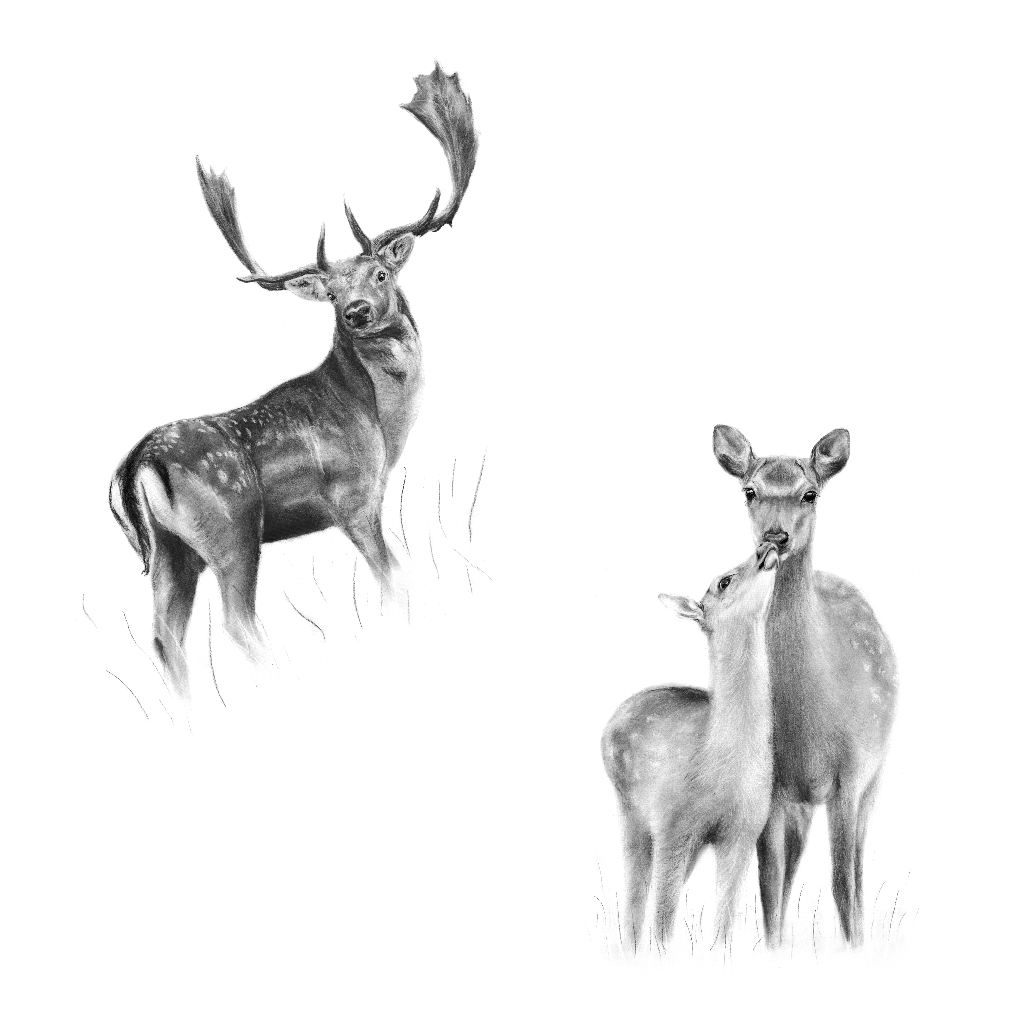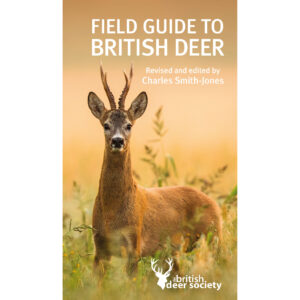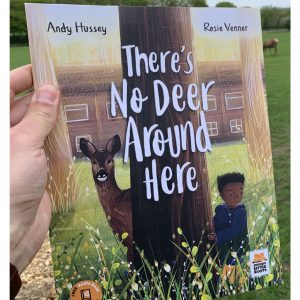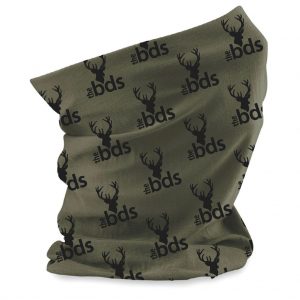ABOUT FALLOW DEER
Fallow deer bucks weigh between 46 to 93kg. Fully grown females (does) are 0.73 to 0.91m at the shoulder and weigh between 35 to 56kg. By comparison, an average adult man in Britain is 1.77m high and weighs 79kg.
Male fallow called bucks, females does and the young fawns.
If you see a white deer it may well be a fallow as they have four main variations of coat which includes white:
- Common – tan/fawn, with white spotting on flanks and white rump patch outlined with black horseshoe shaped border. Coat fades to a general grey colour during the winter
- Menil – paler colouration with white spots year-round and a caramel horseshoe shape on rump
- Melanistic – black, almost entirely black or chocolate coloured
- White – white to pale sandy-coloured turning increasingly white with age (this is a true colour and not albino).
They often have a distinctive black inverted horseshoe shape on their rumps, and a black stripe on their tails which are the longest of all British deer.
Fallow is the only deer species in the UK with palmate antlers. These become full-sized after the deer are three/four years old and can reach up to 0.7m in length. Facially, their head is more elongated than some species with large angular ears.
Does and their young give short barks when alarmed. Bucks groan loudly during the breeding season.
Fallow deer leave large hoof prints (slots), about 6cm long in soft ground. Their feet are more elongated than roe deer and are heavier, creating deeper prints.
90cm
HEIGHT AT SHOULDER
93kg
WEIGHT (UP TO)
By comparison, an average adult man in Britain weighs 79kg.
16 yrs
AVERAGE LIFESPAN
Throughout a large portion of the year the sexes remain separated and only congregate during the mating months.
History, distribution & habitat
FALLOW DEER UK DISTRIBUTION

Population density and habitat influence both group size and the degree of sexual segregation.
Groups of adult males and females, usually with young, remain apart for most of the year in large woodlands, only coming together to breed. Sexes freely mix in large herds throughout the year in open, agricultural environments.
Positives and Negatives
Damage caused by browsing of tree shoots and agricultural crops puts fallow deer in conflict with farmers and foresters and their ability to reach very high densities can result in high local levels of damage. Conversely, many country and forest estates can gain substantial revenue from recreational stalking and/or venison production.
Fallow deer are also farmed for their venison and are one of the most important ornamental park species in the UK.
Regardless of the context, fallow deer populations require careful management to maintain health and ensure a sustainable balance with their environment.
Breeding, behaviour & lifecycle
Behaviour depends upon the environment and population density. In most populations, bucks maintain a traditional, defended rutting stand. In others, a temporary rutting stand is maintained to attract sufficient does to herd them into a harem. In areas with very high buck densities a lek (a gathering of males engaging in a competitive display to attract potential mates) may be formed. In lower density areas bucks may simply seek out receptive females. In common with other large species of deer, during conflict, the bucks’ behaviour escalates from groaning and parallel walks to fighting. During the rut, bucks groan tremendously and does with fawns give a short bark when alarmed.
After mating, adult does give birth to a single fawn in June or July after a gestation of 229 days. Bucks generally live for 8 – 10 years although they can live as long as 16 years.
Fallow deer are active throughout the 24-hour period but make use of open spaces during the hours of darkness in populations experiencing frequent disturbance. Peak activity is at dawn and dusk with most daytime hours spent ‘lying up’, where they lie down to ruminate between feeding bouts.
FALLOW DEER PROJECT
Over the last 5 years, the British Deer Society has supported the Arts & Humanities Research Council funded ‘Fallow Deer Project’, which has been examining how, when and why the European fallow deer (Dama dama) spread around the world from its native homeland in the Mediterranean.
To find out more about the project watch the video Dama: The Deer that Walked the World.










